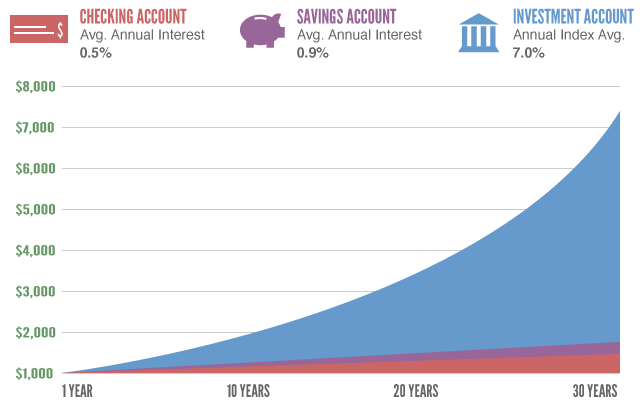Saving and Investing An Introduction to Diversification
Post on: 15 Июнь, 2015 No Comment

Published on April 7th, 2008
April is Financial Literacy Month. during which Get Rich Slowly will explore the fundamentals of personal finance. Today well take a quick look at diversification.
Last year, I shared a series of YouTube clips from Michael Fischer, who is on a mission to educate people about essential personal finance skills. His book, Saving and Investing . is 132 pages of fantastic financial information. Fischer doesnt provide any scams or gimmicks he just gives the facts. (The drawback? The book is a little dry.)
Fischer has created some new videos, which I intend to share in the coming weeks. In the first, he again explores diversification. Diversification is one of the most important concepts that relates to saving and investing, says Fischer says. Diversification means not putting all of your eggs into one basket.
In general. the movements of stocks and bonds and commodities and real estate are not strongly correlated. Just because the stock market is down doesnt mean the real estate market will be down. In general. the returns on these investment classes are independent of each other. By putting some money into each class, youre able to reduce your risk while theoretically maintaining your return on investment.
This might sound complicated, but its not. Think of it this way: If I ask you to bet $100 on the flip of a coin, and promise to give you $220 if you make the right call, but I get to keep the $100 if you lose, you would probably refuse. The risk is too high. But if I asked you to agree to stake $100 on each of ten similar coin tosses, would you do it? I suspect you might. Your expected rate of return is still the same (10%), but your risk is significantly reduced.
That is the power of diversification. Each coin flip is like owning an individual stock. Buy owning more stocks, you can maintain a similar rate of return while decreasing your risk. (Note that you also reduce your potential gains, however.)
You can diversify your investments simply by adding a couple funds to your portfolio. You might put 10% of your money into a bond fund, for example, and 10% into a real estate investment trust (which is like a mutual fund for real estate). In the same way that its better to own more than one stock, its also better to own more than just stocks.
The two best discussions of diversification Ive found are in:
- Burton Malkiels The Random Walk Guide to Investing [my review ], from which I borrowed the coin-toss example above.
- Kathy Kristofs Investing 101 . which I hope to review soon.

These are both great books for beginning investors. Theyre not technical, and they approach the subject with the average person in mind. Both of them note that there are several ways to approach diversification, including:
- Diversification among stocks. If you want to take some extra money and gamble it on some high-flying biotech stock, go ahead, Malkiel writes. But for your serious retirement money, dont buy individual stocks buy mutual funds. In particular, he recommends a portfolio of index funds.
- Diversification among asset classes. In Investing 101. Kristof spends 32 pages discussing the importance of diversification, exploring different asset classes in detail. She discusses investing for safety (with cash or cash-equivalents), investing for income (with certificates of deposit, Treasury bonds, REITs, etc.), investing for growth (with stocks and mutual funds), and investments that protect you from inflation (such as precious metals). She discusses the pros and cons of each class, and explains why the ideal portfolio has a little of each.
- Diversification over time. Many investors practice dollar-cost averaging as a means to mitigate risk. (Though most of us dollar-cost average because we dont have huge lump sums to invest.) Malkiel writes, Periodic investments of equal dollar amounts in common stocks can reduce (but not avoid) the risks of equity investment by ensuring that the entire portfolio of stocks will not be purchased at temporarily inflated prices. (Please note that dollar-cost averaging has critics with valid points.)
Some investors also diversify internationally, or within asset classes (owning both CDs and Treasury bonds, for example).
How much should you diversify? And which investments should you choose? Theres no one right answer. The answer depends on you and your financial goals. The U.S. Government Securities and Exchange Commission has an excellent beginners guide to asset allocation, diversification, and rebalancing. If youd like to learn more about this subject, its a great place to start. (I also found an asset allocation calculator. but I wouldnt take the results as gospel. Use them as a starting point, but make your own decisions.)
Michael Fischer spent nine years at Goldman Sachs, advising some of the largest private banks, mutual fund companies and hedge funds in the world on investment choices. Look for more episodes of Saving and Investing at Get Rich Slowly during the month of April. For more information, visit Michael’s site, Saving and Investing. or purchase his book .
GRS is committed to helping our readers save and achieve their financial goals. Savings interest rates may be low, but that is all the more reason to shop for the best rate. Find the highest savings interest rates and CD rates from Synchrony Bank. Ally Bank. GE Capital Bank. and more.














